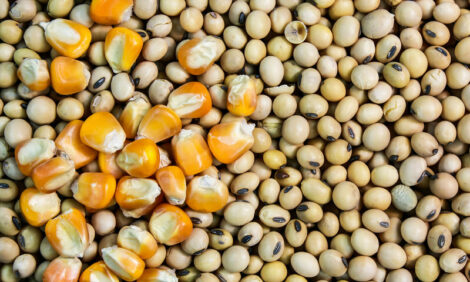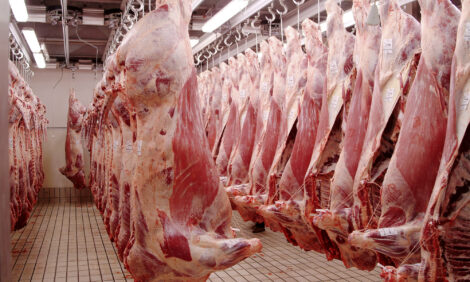



Understanding feed flow and biosecurity is critical in ASF battle
Imported feed ingredients could pose ASF risk in the US so how can feed-mill biosecurity help to prevent ASF and other foreign animal diseases?The US pork industry is nervous about African swine fever (ASF) and other foreign animal diseases entering the country – and for good reason. No vaccine exists for ASF. Researchers are also concerned that ASF, like porcine epidemic diarrhoea (PED) virus, could slip into the US with certain types of imported feed ingredients.
Jordan Gebhardt, who is working on his DVM degree and a PhD in swine nutrition and feed safety at Kansas State University, spoke with Pig Health Today about the role of feed-mill biosecurity as it relates to foreign animal diseases.
A fresh look
In 2013, when PED arrived in the US and caused substantial economic losses, it became apparent that the industry needed to change the way it looked at feed mills, feed ingredients and complete feed, as well as the role each of those entities potentially play in spreading disease. Finding solutions has been a collaborative effort by veterinarians, nutritionists, producers and production people, Gebhardt said.
“We’ve worked extensively throughout our PED research and beyond with Iowa State University, Dr Scott Dee and his group at Pipestone, as well as South Dakota State University and others,” he said. “A lot of the research that we have focused on, beginning with PED, was understanding the risk of transmission from mill to farm, and on what we can do to prevent or reduce that risk.”
As a follow-up to initial studies, Gebhardt said the focus was on how a contaminated feed or feed ingredient might spread within a mill and, subsequently, how that material might end up in a feed truck and ultimately at the farm.
The first step is understanding the dynamics of feed ingredients and unfinished product coming into the mill, how it is distributed within the mill and how it goes out to farm.
“It’s a very complex and dynamic process,” Gebhardt said. Biosecurity needs to start at the feed mill, and it’s critical to make sure the mill isn’t harbouring viruses.
“If a mill does become infected, we have found it’s very, very difficult to decontaminate and reduce the risk of transmission,” Gebhardt said. “Therefore, a lot of the research is focused on the biosecurity aspect and the ultimate goal of keeping the pathogen out of the mill in the first place.”
Keeping pathogens out of feed mills is one way to ease concerns about creating infection risks at the farm level.
Start at the source
Research by Dee and others has shown that pathogens could potentially be coming from foreign areas, specifically Asia or Europe.
“Understanding how ingredients flow from those areas into our mills and subsequently to the farm has become a very important focus,” Gebhardt stressed. “And it’s necessary to determine the overall risk.”
Many vitamins and minerals are manufactured in China, so the option of sourcing these products from other countries isn’t a viable economic option.
“It’s a dynamic and complex state of affairs,” Gebhardt said, in reference to some ingredients sourced from Asia. Economics are part of the scenario, as are domestic supply-chain capacities. He said historically, veterinarians and nutritionists might not have paid attention to where ingredients were sourced, indicating they may purchase ingredients from a broker or distributor rather than directly from a feed supplier.
“But because we know there are risks, it’s important to work with our feed suppliers to understand where those ingredients are being sourced and the associated risk factors, and ultimately make the best decisions for a specific production system to help reduce the risk of disease transmission,” Gebhardt said.
Understand the risks
Gebhardt agrees that feed mills have a difficult challenge, knowing so many ingredients are sourced from China and that ASF is rampant in that country. Understanding the risk is a good first step.
“At this point, our group at K-State and others are recommending producers work with their feed suppliers to help understand the risks. If ingredients, like vitamins with specific carriers such as rice hulls or ground corn cobs, are sourced from that part of the world, it’s important to understand how those ingredients are being processed,” he said.
He said the best decision for any producer will be to consider the variables on an individual basis, including risk assessments and economic implications of changing an ingredient source or a specific mill.
What about mitigants?
Gebhardt said researchers began looking at mitigants specific to PED virus, and extensive work has been done in this area.
“Our group at K-State has done a lot of work with commercial formaldehyde products, medium-chain fatty acids and other products specific to PED virus,” Gebhardt said. “We found those compounds are quite effective at reducing the risk of disease transmission.”
However, he added, most formaldehyde products are labelled for the control of Salmonella in both poultry and swine feed; they are not labelled for use against PED or other viruses.
“We have ongoing research with other mitigation options; however that data is not yet completed,” he said.
Questions producers should ask
Gebhardt feels the best thing pork producers can do is work closely with their respective feed mills. “That discussion [on biosecurity] should involve producers and nutritionists as well as the veterinarians involved in establishing health programs for the overall herd,” he said.
K-State recommends using mats to cover receiving pits when loading trucks or driving over grates to help reduce the risk of contamination. Also, mills should establish overall hygiene procedures to properly capture dust and divert it away from the feed supply.
“We’ve shown that when dust becomes contaminated with viruses or bacteria, it harbours those pathogens very well. Basic biosecurity practices within the mill are very important to ensure proper biosecurity,” Gebhardt said.
He also recommends producers and their veterinarians talk with their feed ingredient suppliers. Find out where vitamins or other components are being sourced and determine the overall risk for each ingredient based on its origin.
Gebhardt said the same basic principles apply for on-farm mills as for commercial mills in reducing the risk of disease transmission.
“Feed biosecurity is even more important for those on-farm sites, due to their close proximity to production animals,” he said.
Precautions you can take
There are tests producers can request of their feed mill, Gebhardt said.
“Polymerase chain reaction tests have been developed and established to evaluate PED virus in feed, for example,” he pointed out, but the process is more complicated specific to recent pathogens like ASF. “Due to the extreme implications of a false-positive test, our commercial diagnostic labs don’t have the capacity at this point to test feed for ASF.”
He recommends establishing the overall hygiene level within a mill. Research shows that evaluating the prevalence of specific or generic bacteria content within a mill gives a good estimate of the overall hygiene status and how well the mill is doing at basic biosecurity measures.
Indeed, the food-processing and pet-food industries have done great work in this area to evaluate environmental sampling and environmental monitoring techniques to establish the overall effectiveness of their biosecurity protocols.
Gebhardt said the bottom line is “reducing the risk of disease introductions within mills by working with our veterinarians, nutritionists and ingredient suppliers to help eliminate or greatly reduce the risk of bringing pathogens into the mill in the first place.”






